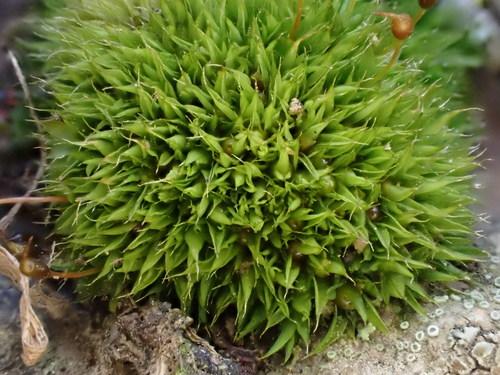
medium.jpeg from: https://www.naturalista.mx/taxa/1356825-Tortula-acaulon-pilifera
Introduction
In the vast and captivating world of bryophytes, one particular moss species stands out for its resilience and adaptability – the Tortula pilifera Hook. moss, belonging to the Pottiaceae family. Often referred to simply as Tortula, this unassuming yet remarkable plant has captured the hearts of moss enthusiasts worldwide.
Background
Before delving into the intricacies of Tortula pilifera, it’s essential to understand the broader context of bryophytes. These non-vascular plants, which include mosses, liverworts, and hornworts, are among the oldest land plants on Earth, dating back over 400 million years. Despite their diminutive stature, they play a crucial role in various ecosystems, acting as pioneers in colonizing barren landscapes and contributing to soil formation.
Main Content
Morphology and Identification
Tortula pilifera is a small, acrocarpous moss that forms dense, cushion-like tufts or mats. Its leaves are lanceolate to oblong-lanceolate, with a distinctive hyaline hair-point at the apex, giving the plant a delicate, feathery appearance. The capsules, which contain the spores, are cylindrical and erect, borne on a reddish-brown seta (stalk).
One of the key identifying features of Tortula pilifera is its twisted and contorted peristome teeth, which aid in spore dispersal. This characteristic, along with its distinctive leaf shape and hair-point, makes it relatively easy to distinguish from other moss species.
Global Distribution and Habitat
Tortula pilifera is a cosmopolitan species, meaning it can be found on almost every continent, except Antarctica. It thrives in a wide range of habitats, from urban areas to natural environments, showcasing its remarkable adaptability. This moss can be found growing on soil, rocks, walls, roofs, and even tree bark, often in areas with moderate disturbance or human activity.
Ecological Roles and Adaptations
Despite its small size, Tortula pilifera plays a vital role in various ecosystems. As a pioneer species, it helps stabilize and enrich soils, creating favorable conditions for other plants to establish themselves. Additionally, it provides a microhabitat for numerous invertebrates, contributing to biodiversity.
One of the key adaptations that allow Tortula pilifera to thrive in diverse environments is its ability to tolerate desiccation. During dry periods, the moss can enter a state of dormancy, curling up its leaves to minimize water loss. When moisture becomes available again, it quickly rehydrates and resumes its metabolic activities, showcasing its remarkable resilience.
Case Studies/Examples
Tortula pilifera has been the subject of numerous scientific studies, highlighting its ecological significance and adaptations. For instance, researchers have investigated its ability to accumulate heavy metals, making it a potential biomonitor for environmental pollution. Additionally, its tolerance to urban environments has made it a valuable species for green infrastructure projects, such as green roofs and living walls.
Technical Table
| Characteristic | Description |
|---|---|
| Family | Pottiaceae |
| Genus | Tortula |
| Species | pilifera |
| Growth Form | Acrocarpous moss |
| Leaf Shape | Lanceolate to oblong-lanceolate |
| Leaf Apex | Hyaline hair-point |
| Capsule Shape | Cylindrical, erect |
| Peristome Teeth | Twisted and contorted |
| Habitat | Soil, rocks, walls, roofs, tree bark |
| Distribution | Cosmopolitan |
Conclusion
Tortula pilifera Hook., a humble yet remarkable moss species, has captivated the hearts of bryologists and nature enthusiasts alike. Its resilience, adaptability, and ecological significance make it a true marvel of the plant kingdom. As we continue to explore and appreciate the diversity of life on our planet, this unassuming moss serves as a reminder of the intricate beauty and complexity that surrounds us, even in the smallest of forms.
Ponder this: In a world where urbanization and environmental challenges persist, could Tortula pilifera hold the key to unlocking sustainable solutions for greener cities and healthier ecosystems?